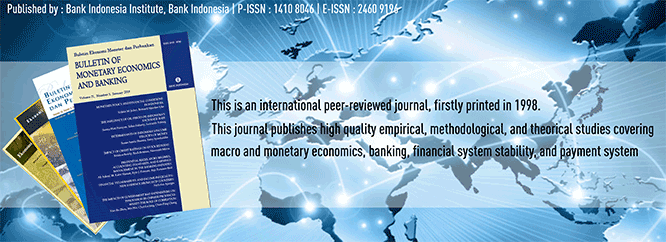
Document Type
Article
Abstract
We offer new insights on the dynamics of the exchange rate–interest rate differentialfor the case of G7 economies. We show that the nexus is better considered using anasymmetric model, as suggested by a host of previous studies. In addition, we find therole of accounting for structural breaks to be prominent. We also show differences in thenexus between euro and non-euro G7 countries, suggesting heterogeneous monetarypolicies. Thus, we document the strongest evidence for the sticky price hypothesis inJapan and lesser evidence in the euro countries and the United Kingdom, with Canadaconsistently revealing evidence for the flexible price hypothesis.
Recommended Citation
Golit, Peter; Salisu, Afees; Akintola, Akinwunmi; Nsonwu, Faustina; and Umoren, Itoro
(2019)
"EXCHANGE RATE AND INTEREST RATE DIFFERENTIAL IN G7 ECONOMIES,"
Bulletin of Monetary Economics and Banking: Vol. 22:
No.
3, Article 1.
DOI: https://doi.org/10.21098/bemp.v22i3.1147
Available at:
https://bulletin.bmeb-bi.org/bmeb/vol22/iss3/1
First Page
263
Last Page
286
Creative Commons License

This work is licensed under a Creative Commons Attribution-NonCommercial 4.0 International License
Country
Nigeria
Affiliation
Central Bank of Nigeria

